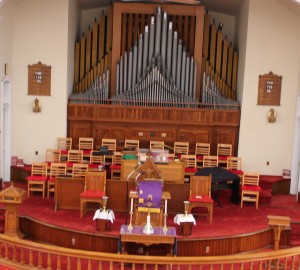The History of Our Church
Lincoln on Methodists
1768
1770


1771
– The first place Frances Asbury preached was Burlington. He landed in Philadelphia on October 27, 1771. On November 7, he came to Burlington on his way to New York and preached in the Court House to a “large, serious congregation.” Returning from New York, he preached again in Burlington and then went over to New Mills (Pemberton), where he preached in the Baptist Meeting House and was kindly received. He made Philadelphia his headquarters and exercised pastoral oversight over the society at Burlington.
Mr. James Sterling was a prosperous merchant here in Burlington, and an earnest worker not only not only here, but in all points of the Burlington Circuit. He often accompanied the ministers and rendered valuable assistance in establishing Methodism at other points. His home became the home of all Methodist itinerants and his hospitality was known far and wide. His daughter, Mrs. Rebecca Sterling Cowperthwait, was the founder of the Church School. He, his wife and daughter are buried in the Church Cemetery on Lawrence Street.
1788
– Methodist’s first house of worship constructed, located on Library Street facing South. Size: 29 x 35 feet, two stories in height, built in the same architectural style as the Quaker meeting houses. It was considered adequate and could accommodate about 80 people. It was considered very modern, as a big, pot-bellied stove provided heat (somewhat of a rarity at that time). This meeting house served the Methodists of the area for a period of 32 years. The original building is still in existence, having been bought by and moved to the estate of James Logan, a Mt. Holly lawyer who resides outside of Burlington. A picture of the 1788 church building hangs in the upstairs entrance to the sanctuary.
January 14, 1818
1819
1846-1847
1887


1938
1947
1966
1967
